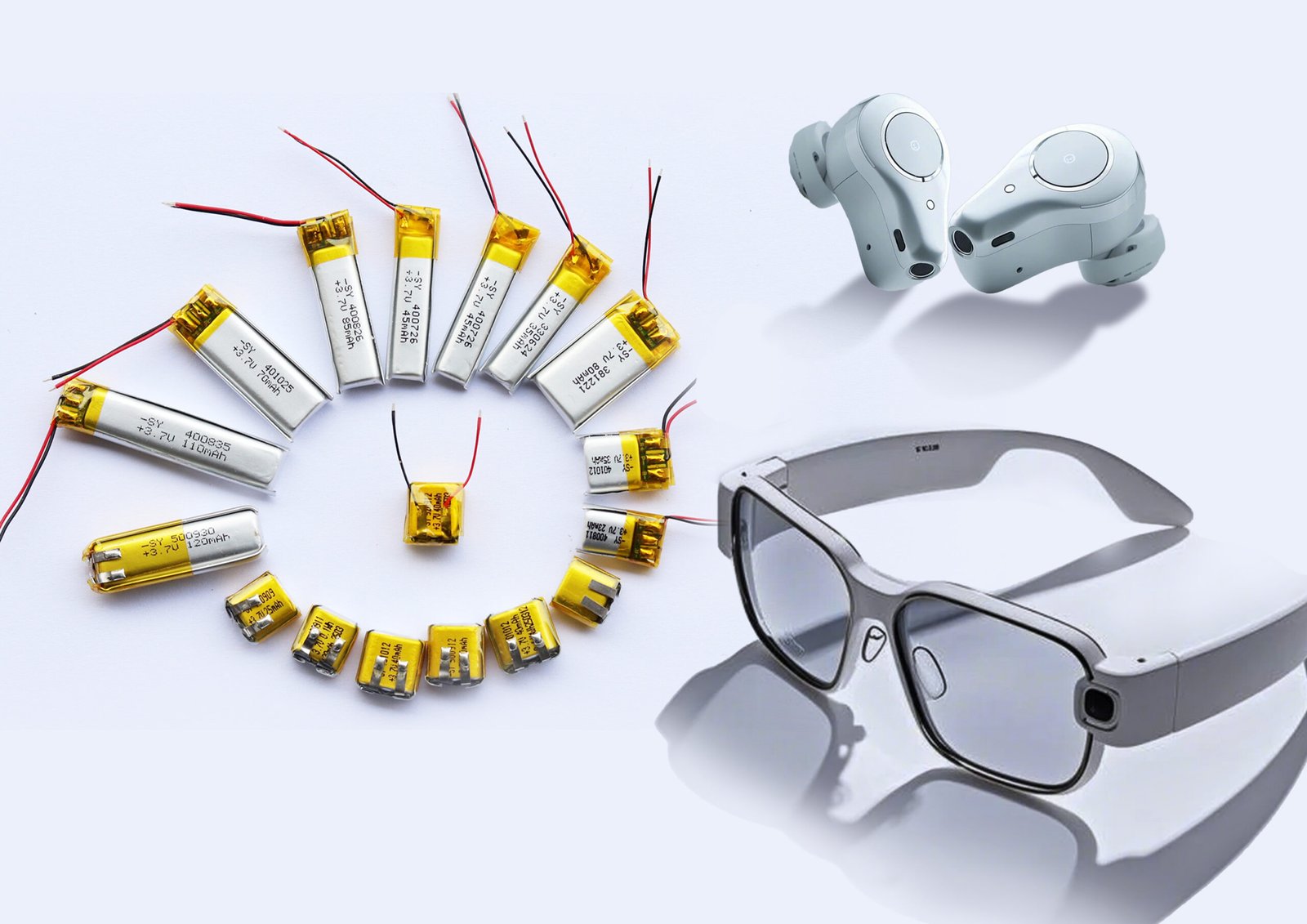
Even as smart glasses gain popularity, battery suppliers face tougher challenges than ever in delivering smaller, safer, and longer-lasting power.
In my view, the suppliers who can solve the key battery challenges of 2025 will dominate the next generation of smart glasses innovation.
Table of Contents
ToggleWhy Is 2025 a Turning Point for Battery Suppliers?

The smart glasses market is entering a critical maturity phase where battery performance could make or break entire product lines.
I believe that in 2025, batteries will no longer be a hidden component—they’ll define the success or failure of smart glasses brands.
Dive Deeper: Industry Pressures Are Building Fast
In 2025, several trends converge:
- Wider Consumer Adoption: More users expect all-day functionality.
- AR/VR Hardware Growth: Devices demand more continuous power for immersive experiences.
- Competition Explosion: New brands enter the market, intensifying the race for performance.
Battery suppliers must now innovate faster, meet stricter standards, and support diversified device designs.
Delays, defects, or underperformance could permanently damage their reputations in an increasingly unforgiving market.
What Are the Biggest Technical Challenges?

Making batteries smaller, safer, and stronger—all at once—is harder than ever.
From my discussions with suppliers, the most difficult problems aren’t size or power alone—it’s optimizing everything together without trade-offs.
Dive Deeper: The 2025 Battery Balancing Act
Key technical pain points:
| Challenge | Why It Matters |
|---|---|
| Energy Density Limits | Users want longer life without bigger size |
| Miniaturization Trade-offs | Shrinking batteries weakens durability |
| Fast Charging Stress | Quick recharging strains battery chemistry |
Finding new materials, new architectures, and better production methods is no longer optional—it’s the price of survival.
How Is Cost Pressure Changing the Market?

As competition heats up, brands expect better batteries—but at lower costs.
I’ve noticed that in 2025, many OEMs treat battery innovation as a given, but aren’t willing to pay a premium anymore.
Dive Deeper: Breaking the Innovation-Cost Paradox
- R&D Budgets Are Shrinking: Companies want faster ROI on battery tech.
- Commodity Pricing Pressures: Raw material prices, like lithium and cobalt, remain volatile.
- Mass Market Expectations: Consumers now expect high-end features at mid-range prices.
Suppliers must redesign processes to produce advanced batteries at scale without massive cost increases. Those who can’t balance innovation with affordability risk losing major contracts.
Why Does Thermal Management Matter More Than Ever?

As smart glasses pack more functions into smaller frames, battery heat becomes a bigger hidden danger.
Personally, I think poor thermal management will cause more smart glasses failures in 2025 than battery capacity issues.
Dive Deeper: Heat—the Silent Device Killer
Without proper cooling:
- User Comfort Drops: Glasses get hot and uncomfortable.
- Battery Degrades Faster: Heat accelerates wear and reduces cycle life.
- Safety Risks Increase: Overheating raises explosion or fire hazards.
Suppliers must now embed passive and active thermal management into battery design itself—not just leave it for device makers to solve later.
How Are New Regulations Impacting Battery Design?

Environmental, safety, and sourcing regulations are tightening globally—and batteries are squarely in the crosshairs.
In my role, I see compliance becoming a major bottleneck for suppliers that don’t plan ahead.
Dive Deeper: New Rules, New Risks
By 2025:
- EU Batteries Regulation: Mandates carbon footprint declarations and recyclability standards.
- US Consumer Product Safety Commission: Tightening wearable device battery safety requirements.
- Global Conflict Minerals Laws: Require stricter sourcing transparency.
Non-compliance won’t just mean fines—it will block access to key markets altogether. Battery suppliers need end-to-end traceability, eco-design strategies, and legal expertise as core competencies now.
What Customer Expectations Are Harder to Meet Now?

Buyers today demand longer life, faster charging, zero overheating, smaller size—and lower prices. All at once.
If you ask me, customer expectations have doubled in 2025, but acceptable compromises have disappeared.
Dive Deeper: Unrealistic? Maybe. Unavoidable? Absolutely.
Here’s what OEMs typically demand in 2025:
| Feature Requirement | Customer Expectation |
|---|---|
| Battery Life | Minimum 8–10 hours |
| Fast Charging | 80% in under 20 minutes |
| Weight and Size | 20% smaller each generation |
| Sustainability | Full recyclability, low emissions |
Suppliers that cannot deliver across all dimensions will quickly fall off preferred vendor lists.
Which Technologies Could Solve These Problems?

Next-generation material science and smart system integration hold the keys to the future.
I’m betting that the winners in 2025 will be the suppliers who master not one, but two or three of these breakthrough technologies at once.
Dive Deeper: Innovation to the Rescue
Promising solutions:
- Solid-State Batteries: Higher density and safer operation.
- Graphene Supercapacitors: Lightning-fast charging capabilities.
- Smart Battery Management Systems (BMS): Real-time thermal and usage optimization.
The real challenge isn’t inventing these technologies—it’s industrializing them fast enough to meet smart glasses timelines.
Conclusion
Smart glasses battery suppliers face their toughest year ever in 2025.
Only those who can master innovation, cost control, thermal management, compliance, and customer delight all at once will thrive.

